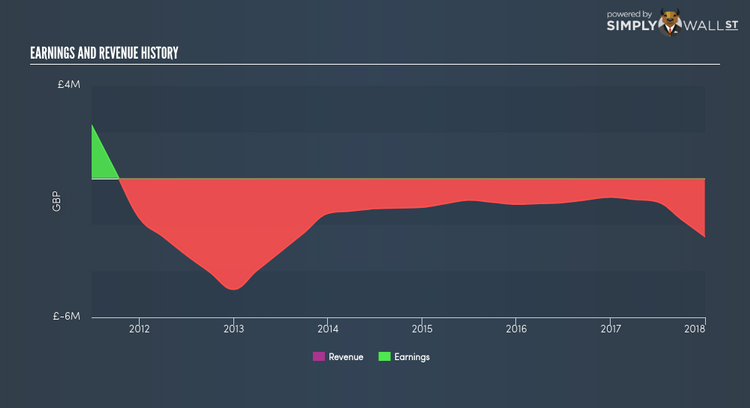Can GCM Resources Plc (LON:GCM) Improve Your Portfolio Returns?

For GCM Resources Plc’s (AIM:GCM) shareholders, and also potential investors in the stock, understanding how the stock’s risk and return characteristics can impact your portfolio is important. The beta measures GCM’s exposure to the wider market risk, which reflects changes in economic and political factors. Different characteristics of a stock expose it to various levels of market risk, and the market as a whole represents a beta of one. Any stock with a beta of greater than one is considered more volatile than the market, and those with a beta less than one is generally less volatile.
See our latest analysis for GCM Resources
What is GCM’s market risk?
GCM Resources has a beta of 1.31, which means that the percentage change in its stock value will be higher than the entire market in times of booms and busts. A high level of beta means investors face higher risk associated with potential gains and losses driven by market movements. According to this value of beta, GCM will help diversify your portfolio, if it currently comprises of low-beta stocks. This will be beneficial for portfolio returns, in particular, when current market sentiment is positive.
Does GCM’s size and industry impact the expected beta?
GCM, with its market capitalisation of UK£29.19M, is a small-cap stock, which generally have higher beta than similar companies of larger size. Moreover, GCM’s industry, oil and gas, is considered to be cyclical, which means it is more volatile than the market over the economic cycle. As a result, we should expect higher beta for small-cap stocks in a cyclical industry compared to larger stocks in a defensive industry. This is consistent with GCM’s individual beta value we discussed above. Fundamental factors can also drive the cyclicality of the stock, which we will take a look at next.
How GCM’s assets could affect its beta
During times of economic downturn, low demand may cause companies to readjust production of their goods and services. It is more difficult for companies to lower their cost, if the majority of these costs are generated by fixed assets. Therefore, this is a type of risk which is associated with higher beta. I test GCM’s ratio of fixed assets to total assets in order to determine how high the risk is associated with this type of constraint. Considering fixed assets is virtually non-existent in GCM’s operations, it has low dependency on fixed costs to generate revenue. As a result, the company may be less volatile relative to broad market movements, compared to a company of similar size but higher proportion of fixed assets. This outcome contradicts GCM’s current beta value which indicates an above-average volatility.
What this means for you:
You could benefit from higher returns during times of economic growth by holding onto GCM. Its low fixed cost also means that, in terms of operating leverage, it is relatively flexible during times of economic downturns. What I have not mentioned in my article here are important company-specific fundamentals such as GCM Resources’s financial health and performance track record. I urge you to complete your research by taking a look at the following:
Financial Health: Is GCM’s operations financially sustainable? Balance sheets can be hard to analyze, which is why we’ve done it for you. Check out our financial health checks here.
Past Track Record: Has GCM been consistently performing well irrespective of the ups and downs in the market? Go into more detail in the past performance analysis and take a look at the free visual representations of GCM’s historicals for more clarity.
Other High-Performing Stocks: Are there other stocks that provide better prospects with proven track records? Explore our free list of these great stocks here.
To help readers see pass the short term volatility of the financial market, we aim to bring you a long-term focused research analysis purely driven by fundamental data. Note that our analysis does not factor in the latest price sensitive company announcements.
The author is an independent contributor and at the time of publication had no position in the stocks mentioned.

